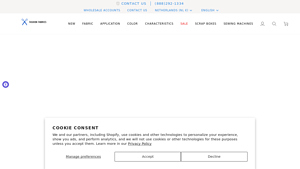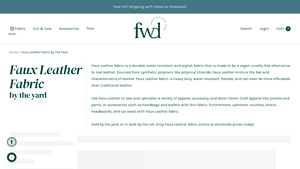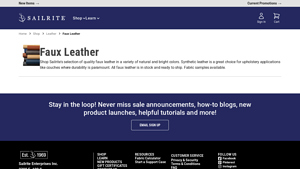Introduction: Navigating the Global Market for fake leather fabric
In today’s competitive marketplace, sourcing high-quality fake leather fabric presents a unique challenge for B2B buyers. As industries increasingly pivot towards sustainable and cost-effective materials, the demand for faux leather alternatives continues to rise, especially in regions such as Africa, South America, the Middle East, and Europe. This comprehensive guide aims to equip international buyers with the insights needed to navigate the complexities of sourcing faux leather, whether for furniture upholstery, automotive applications, or commercial projects.
Throughout this guide, we will explore the various types of fake leather fabrics, including polyurethane (PU) and polyvinyl chloride (PVC), and their respective applications across diverse sectors. Additionally, we will provide essential strategies for vetting suppliers, ensuring that you partner with reliable manufacturers who meet international quality standards. Understanding cost structures and market trends will empower you to make informed purchasing decisions that align with your business objectives and budget constraints.
By delving into the nuances of the fake leather fabric market, you will be better positioned to capitalize on the growing demand for sustainable and versatile materials. This guide serves as your essential resource, helping you navigate supplier options and make confident choices that drive your business forward in a rapidly evolving landscape.
Table Of Contents
- Top 6 Fake Leather Fabric Manufacturers & Suppliers List
- Introduction: Navigating the Global Market for fake leather fabric
- Understanding fake leather fabric Types and Variations
- Key Industrial Applications of fake leather fabric
- 3 Common User Pain Points for ‘fake leather fabric’ & Their Solutions
- Strategic Material Selection Guide for fake leather fabric
- In-depth Look: Manufacturing Processes and Quality Assurance for fake leather fabric
- Practical Sourcing Guide: A Step-by-Step Checklist for ‘fake leather fabric’
- Comprehensive Cost and Pricing Analysis for fake leather fabric Sourcing
- Alternatives Analysis: Comparing fake leather fabric With Other Solutions
- Essential Technical Properties and Trade Terminology for fake leather fabric
- Navigating Market Dynamics and Sourcing Trends in the fake leather fabric Sector
- Frequently Asked Questions (FAQs) for B2B Buyers of fake leather fabric
- Strategic Sourcing Conclusion and Outlook for fake leather fabric
- Important Disclaimer & Terms of Use
Understanding fake leather fabric Types and Variations
| Type Name | Key Distinguishing Features | Primary B2B Applications | Brief Pros & Cons for Buyers |
|---|---|---|---|
| PU Leather | Soft texture, high durability, resembles genuine leather | Upholstery, automotive interiors, fashion accessories | Pros: Cost-effective, easy to clean, eco-friendly. Cons: May not be as breathable as genuine leather. |
| PVC Leather | Stiffer than PU, highly water-resistant, often less expensive | Marine upholstery, outdoor furniture, commercial applications | Pros: Durable, easy maintenance, wide color selection. Cons: Less flexible, may crack over time. |
| Microfiber Leather | Soft, suede-like feel, highly resistant to stains and wear | High-end furniture, automotive upholstery, fashion items | Pros: Luxurious appearance, durable, easy to clean. Cons: Higher cost compared to other faux leathers. |
| Vegan Leather | Made from plant-based materials, environmentally friendly | Eco-conscious fashion, furniture, accessories | Pros: Sustainable, unique textures, animal-friendly. Cons: Limited durability compared to synthetic options. |
| Leatherette | Generic term for synthetic leather, often vinyl-based | General upholstery, promotional products | Pros: Economical, versatile, wide availability. Cons: Quality can vary significantly between manufacturers. |
What Are the Characteristics of PU Leather for B2B Buyers?
PU leather, or polyurethane leather, is a highly sought-after faux leather type due to its soft texture and remarkable durability, closely mimicking genuine leather. It’s widely used in various B2B applications, including upholstery for furniture and automotive interiors. Buyers appreciate PU leather for its cost-effectiveness, often priced significantly lower than genuine leather, and its easy maintenance, as it can be cleaned with a simple cloth. However, it may not offer the same breathability as natural leather, which is a consideration for certain applications.
How Does PVC Leather Differ from Other Faux Leathers?
PVC leather, or polyvinyl chloride leather, is characterized by its stiffness and high water resistance, making it ideal for marine upholstery and outdoor furniture. This type of faux leather is often less expensive than PU leather, providing an economical option for commercial applications. While it offers excellent durability and a wide range of color choices, its rigidity can be a drawback, as it may crack over time if not properly maintained. B2B buyers should weigh the cost savings against potential long-term durability issues.
What Makes Microfiber Leather a Preferred Choice for Premium Applications?
Microfiber leather stands out for its soft, suede-like feel and exceptional resistance to stains and wear. This quality makes it a popular choice for high-end furniture, automotive upholstery, and fashion items. While it typically comes at a higher price point compared to other faux leathers, the luxurious appearance and durability justify the investment for many B2B buyers. Additionally, its easy cleaning properties enhance its appeal in commercial settings where aesthetics and functionality are paramount.

Illustrative image related to fake leather fabric
Why Is Vegan Leather Gaining Popularity in the B2B Market?
Vegan leather, produced from plant-based materials, has gained traction among eco-conscious consumers and businesses. This environmentally friendly option is increasingly used in fashion, furniture, and accessories, appealing to brands looking to promote sustainability. While vegan leather offers unique textures and designs, it may not match the durability of traditional synthetic options. B2B buyers should consider the target market’s values and preferences when evaluating vegan leather’s suitability for their products.
What Should Buyers Know About Leatherette for General Upholstery Needs?
Leatherette is a broad term that encompasses various synthetic leather types, primarily vinyl-based. It is widely used for general upholstery and promotional products due to its economical pricing and versatility. While leatherette can be a cost-effective solution, the quality can vary significantly between manufacturers. B2B buyers should conduct thorough research to ensure they select a reputable supplier that offers high-quality leatherette to meet their specific project needs.
Key Industrial Applications of fake leather fabric
| Industry/Sector | Specific Application of fake leather fabric | Value/Benefit for the Business | Key Sourcing Considerations for this Application |
|---|---|---|---|
| Furniture Manufacturing | Upholstery for residential and commercial furniture | Cost-effective, durable, and easy-to-clean alternative | Quality certifications, color and texture options, bulk purchasing capabilities |
| Automotive | Interior seating and trim materials | Lightweight, water-resistant, and customizable designs | Compliance with automotive standards, flexibility in design, and supplier reliability |
| Marine | Upholstery for boat seating and interiors | Resilient to weather conditions and easy maintenance | UV resistance, mildew resistance, and availability in marine-specific colors |
| Healthcare | Upholstery for medical furniture | Hygiene-focused materials that are easy to sanitize | Compliance with healthcare regulations, durability, and antimicrobial properties |
| Fashion and Accessories | Handbags, wallets, and clothing | Trendy, sustainable options that appeal to eco-conscious consumers | Variety in textures and styles, ethical sourcing, and production timelines |
How is fake leather fabric transforming the furniture manufacturing sector?
In the furniture manufacturing industry, fake leather fabric is primarily utilized for upholstery in both residential and commercial settings. Its affordability—often up to 75% less than genuine leather—makes it an attractive option for manufacturers looking to optimize costs without sacrificing style. Additionally, the fabric’s durability and ease of cleaning address common concerns related to wear and tear, especially in high-traffic areas like restaurants and hotels. International buyers should prioritize suppliers who offer a wide range of color and texture options, as well as those with the capacity for bulk orders to meet large-scale demands.
What role does fake leather play in the automotive industry?
In the automotive sector, fake leather fabric is extensively used for interior seating and trim materials. Its lightweight nature contributes to overall vehicle efficiency, while its water-resistant properties ensure longevity and ease of maintenance. For B2B buyers in this sector, compliance with automotive standards is crucial, as well as the ability to customize designs to fit specific vehicle models. Additionally, sourcing from reliable suppliers who can provide consistent quality and timely deliveries is essential to keep production schedules on track.

Illustrative image related to fake leather fabric
How is fake leather fabric beneficial for marine applications?
Fake leather fabric is particularly advantageous in the marine industry, where it is used for upholstery on boat seating and interiors. The material’s resilience to harsh weather conditions—such as UV exposure and moisture—ensures that it maintains its aesthetic and functional qualities over time. Buyers from regions with significant marine activities, such as the Middle East and South America, should focus on sourcing options that offer UV and mildew resistance, as well as colors that align with marine design trends.
Why is fake leather important in healthcare settings?
In healthcare environments, fake leather fabric is utilized for medical furniture upholstery, offering a hygienic solution that is easy to sanitize. This is critical in settings where cleanliness is paramount, such as hospitals and clinics. B2B buyers in this sector should consider materials that comply with healthcare regulations, ensuring they meet safety and durability standards. Additionally, options with antimicrobial properties can provide added protection against infections, making them a smart choice for healthcare facilities.
How is fake leather fabric making waves in the fashion industry?
In the fashion and accessories sector, fake leather fabric is increasingly popular for items like handbags, wallets, and clothing. Its versatility allows designers to create trendy, sustainable products that resonate with eco-conscious consumers. For international buyers, particularly in Europe and Africa, sourcing from suppliers who offer a variety of textures and styles is essential. Furthermore, ethical sourcing practices can enhance brand reputation and appeal to consumers who prioritize sustainability in their purchasing decisions.
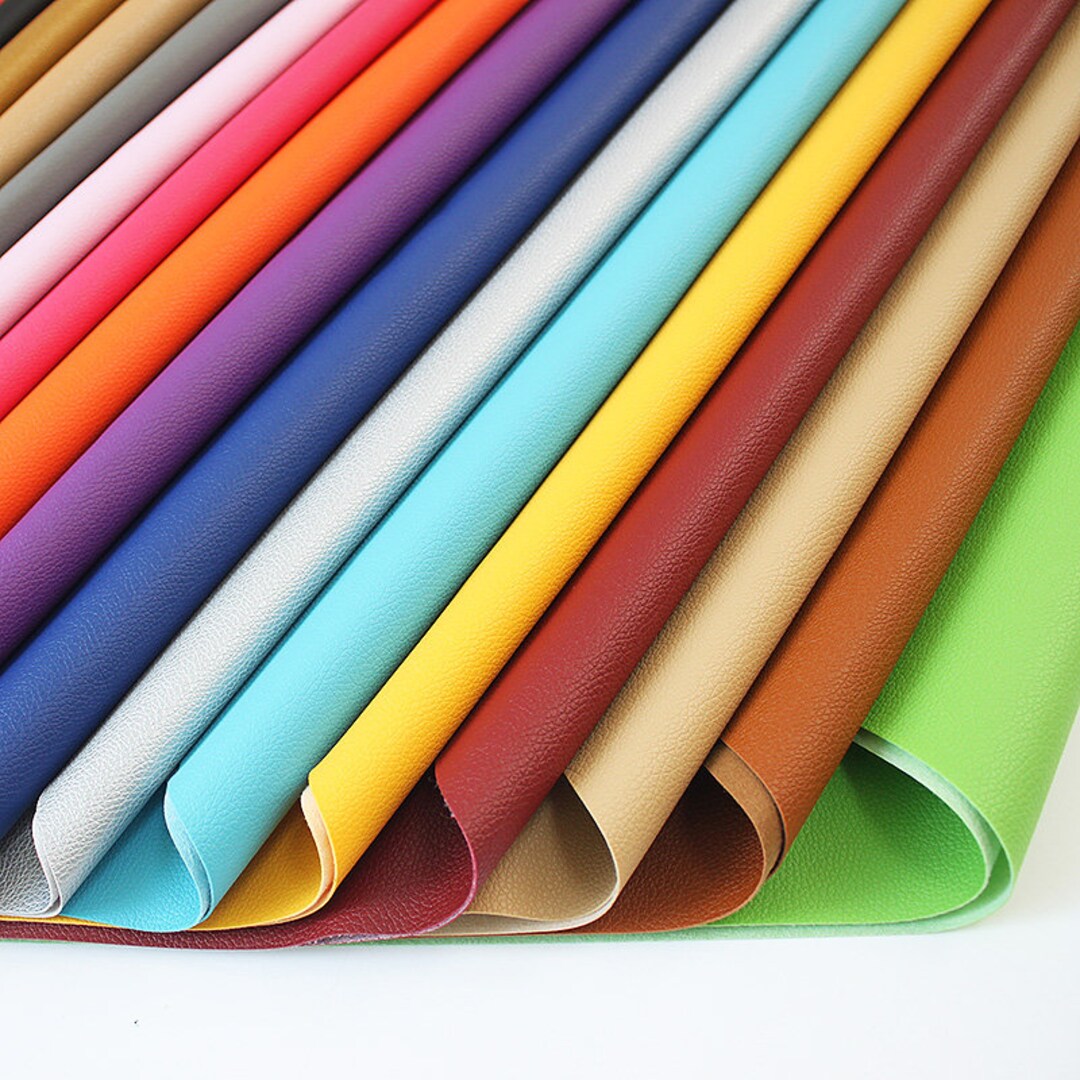
Illustrative image related to fake leather fabric
3 Common User Pain Points for ‘fake leather fabric’ & Their Solutions
Scenario 1: Difficulty in Differentiating Quality of Fake Leather Fabrics
The Problem: B2B buyers often struggle to identify the quality of faux leather fabrics when sourcing materials for upholstery. This challenge is particularly prevalent in international markets where the terminology and standards for faux leather can vary significantly. Buyers may receive samples that look appealing but fail to meet durability or performance expectations. This discrepancy can lead to costly project delays and customer dissatisfaction.
The Solution: To navigate this issue, buyers should establish a clear set of criteria for evaluating faux leather materials before making a purchase. Request detailed product specifications, including the type of backing material, thickness, and any additional treatments such as stain resistance or UV protection. It’s also beneficial to ask for samples from multiple suppliers to compare textures, durability, and finishes. Building relationships with trusted manufacturers known for their high-quality faux leather can also mitigate risk. Engaging in regular communication with suppliers can ensure they meet your specific needs and expectations.
Scenario 2: Limited Color and Style Options Leading to Design Constraints
The Problem: Many B2B buyers find themselves constrained by a limited selection of colors and styles when sourcing fake leather for their projects. This lack of variety can hinder creative design possibilities, especially for businesses in sectors like hospitality or automotive where aesthetics play a crucial role. Buyers may feel pressured to compromise on design quality, which can impact brand image and customer satisfaction.

Illustrative image related to fake leather fabric
The Solution: To overcome this limitation, buyers should prioritize suppliers that offer a broad spectrum of color and style options. Utilizing a filtering system on supplier websites can help identify materials that align with specific design requirements quickly. Additionally, consider collaborating with manufacturers that offer custom color matching or pattern development services. This approach allows businesses to create unique looks that stand out in the market. Furthermore, exploring regional suppliers may reveal new materials that are not widely available internationally, opening up fresh design avenues.
Scenario 3: Concerns About Sustainability and Environmental Impact
The Problem: As the global focus on sustainability intensifies, B2B buyers are increasingly concerned about the environmental impact of the materials they source, including faux leather. Many buyers are unsure whether the products they are considering are eco-friendly or made from harmful substances, which could affect their brand reputation and compliance with regulations.
The Solution: To address these concerns, buyers should conduct thorough research on the sustainability practices of their suppliers. Request certifications or documentation that demonstrate adherence to environmental standards, such as being free from harmful chemicals or using recycled materials. Additionally, look for faux leather options that are marketed as eco-friendly or produced using sustainable methods, such as water-based adhesives and non-toxic dyes. Engaging in conversations with suppliers about their production processes can also provide insight into their commitment to sustainability. By sourcing responsibly, buyers can align their products with consumer values, enhancing brand loyalty and market appeal.
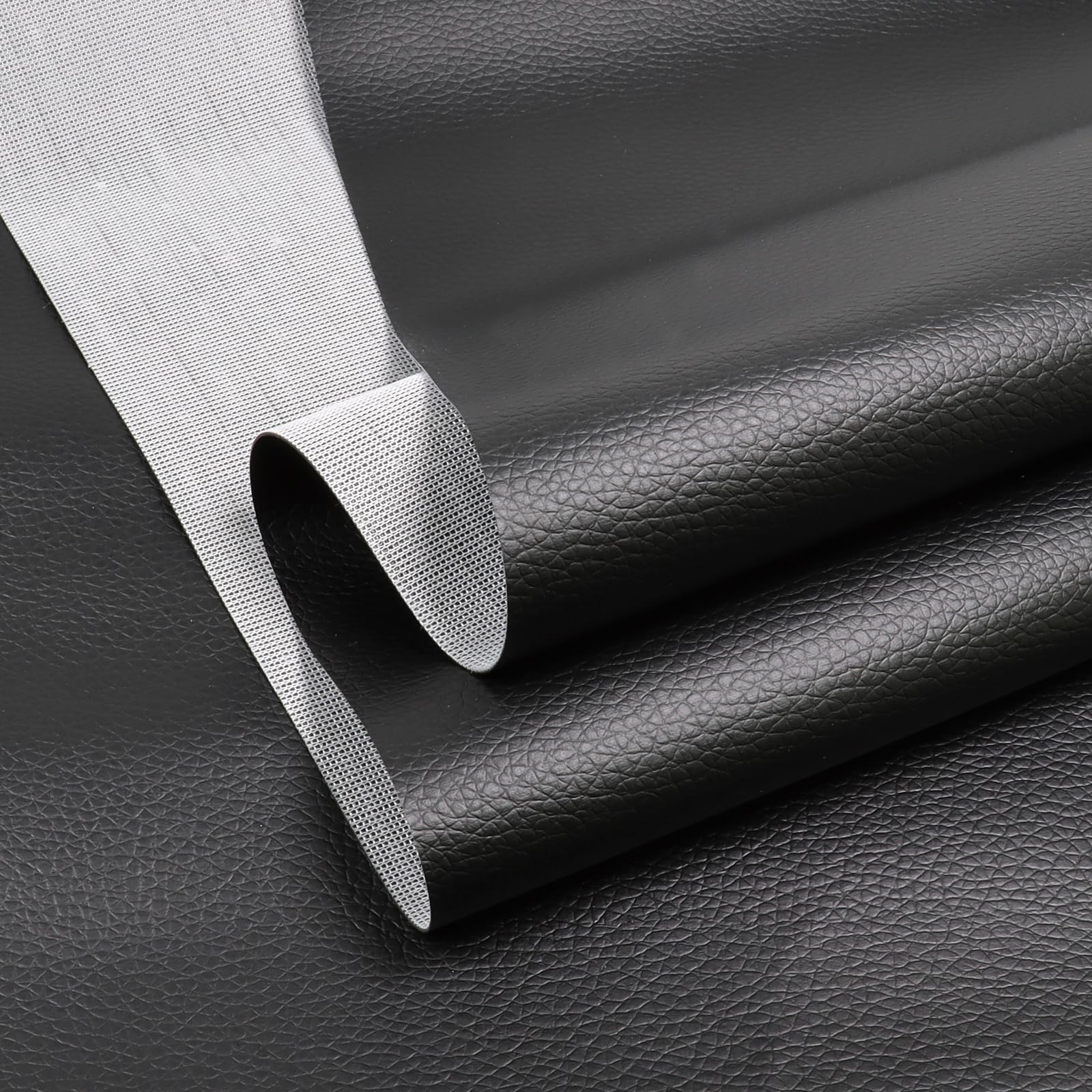
Illustrative image related to fake leather fabric
Strategic Material Selection Guide for fake leather fabric
When selecting materials for fake leather fabric, international B2B buyers must consider various options, each with unique properties, advantages, and limitations. Here, we analyze four common materials used in fake leather production: Polyurethane (PU) Leather, Polyvinyl Chloride (PVC), Microfiber Leather, and Eco-Leather. This analysis will provide actionable insights for buyers, particularly those operating in diverse markets such as Africa, South America, the Middle East, and Europe.
What Are the Key Properties of Polyurethane (PU) Leather?
Polyurethane leather, often referred to as PU leather, is a synthetic material made by coating a fabric backing with a flexible polymer. Key properties include excellent durability, water resistance, and a soft texture that closely mimics genuine leather. PU leather can withstand temperatures ranging from -30°C to 80°C, making it suitable for various climates.
Pros and Cons:
The primary advantages of PU leather are its affordability—typically 75% less than genuine leather—and ease of maintenance. However, it may not be as durable as higher-end materials and can be susceptible to wear over time, especially in high-traffic applications.
Impact on Application:
PU leather is widely used in residential and commercial upholstery, automotive interiors, and marine applications. Its compatibility with diverse media makes it a versatile choice for various products.
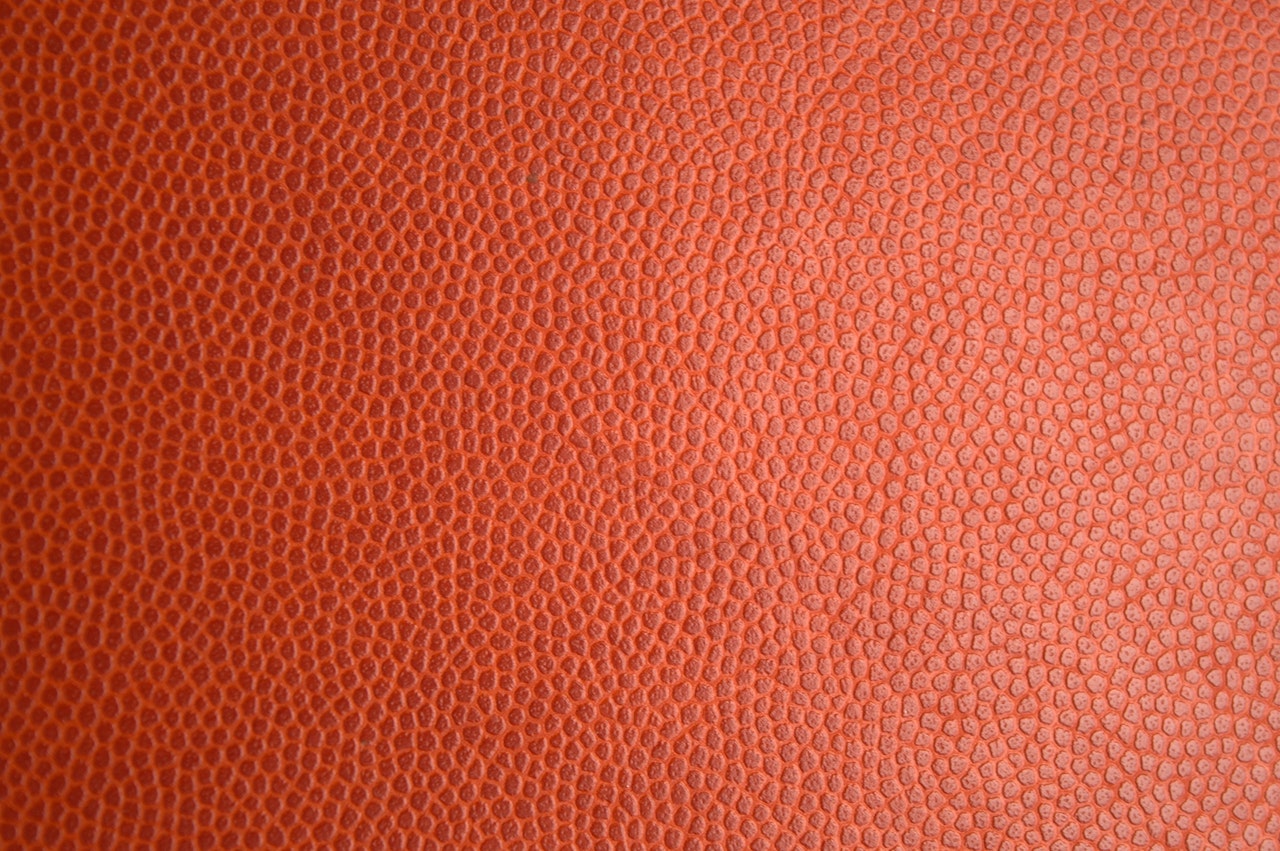
Illustrative image related to fake leather fabric
Considerations for International Buyers:
Buyers must ensure compliance with international standards such as ASTM and DIN, particularly regarding fire safety and environmental regulations. Markets in Europe may prioritize eco-friendly materials, while buyers in Africa might focus on cost-effectiveness.
How Does Polyvinyl Chloride (PVC) Compare in Performance?
Polyvinyl chloride, or PVC, is another popular choice for fake leather. It is known for its high resistance to abrasion and chemicals, making it suitable for demanding environments. PVC can operate effectively in temperatures ranging from -20°C to 60°C.
Pros and Cons:
The key advantages of PVC include its durability and low cost. However, it may lack the flexibility and softness of PU leather, which can limit its use in high-end applications. Additionally, PVC is less breathable, which can be a drawback for upholstery.
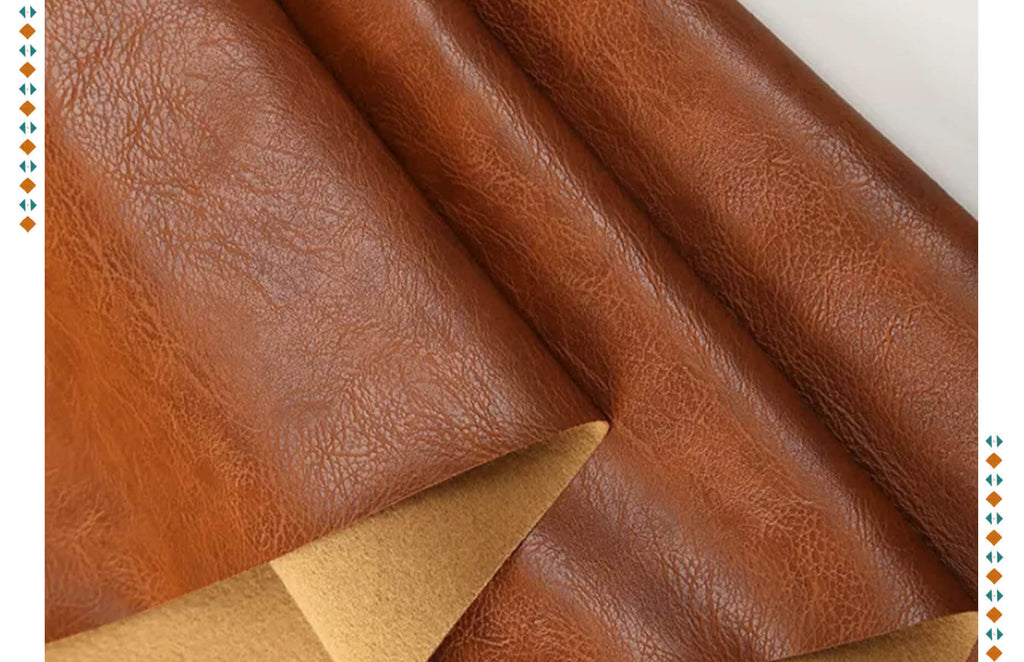
Illustrative image related to fake leather fabric
Impact on Application:
PVC is commonly used in commercial settings, such as healthcare facilities and restaurants, where durability and ease of cleaning are paramount. Its chemical resistance makes it suitable for environments that require stringent hygiene standards.
Considerations for International Buyers:
Buyers must be aware of the potential environmental impact of PVC, particularly in Europe, where regulations on plastic use are becoming stricter. Compliance with local standards is crucial for market entry.
What Are the Unique Features of Microfiber Leather?
Microfiber leather is a synthetic fabric made from ultra-fine polyester and polyamide fibers. It offers a soft, luxurious feel and is highly resistant to stains and fading, with a temperature tolerance of -20°C to 70°C.
Pros and Cons:
Microfiber leather’s key advantages include its durability and ability to mimic the look and feel of genuine leather closely. However, it can be more expensive than PU and PVC options, which may deter cost-sensitive buyers.
Impact on Application:
This material is ideal for high-end furniture, fashion accessories, and automotive interiors, where aesthetics and performance are critical.
Considerations for International Buyers:
Microfiber leather may be subject to different import duties and taxes, depending on the region. Buyers should also consider the sustainability of sourcing practices, as eco-conscious consumers are increasingly influencing market trends.
What Is Eco-Leather and Why Is It Gaining Popularity?
Eco-leather is produced using sustainable practices and materials, often incorporating recycled components. It typically features a lower environmental impact and is gaining traction in markets focused on sustainability.
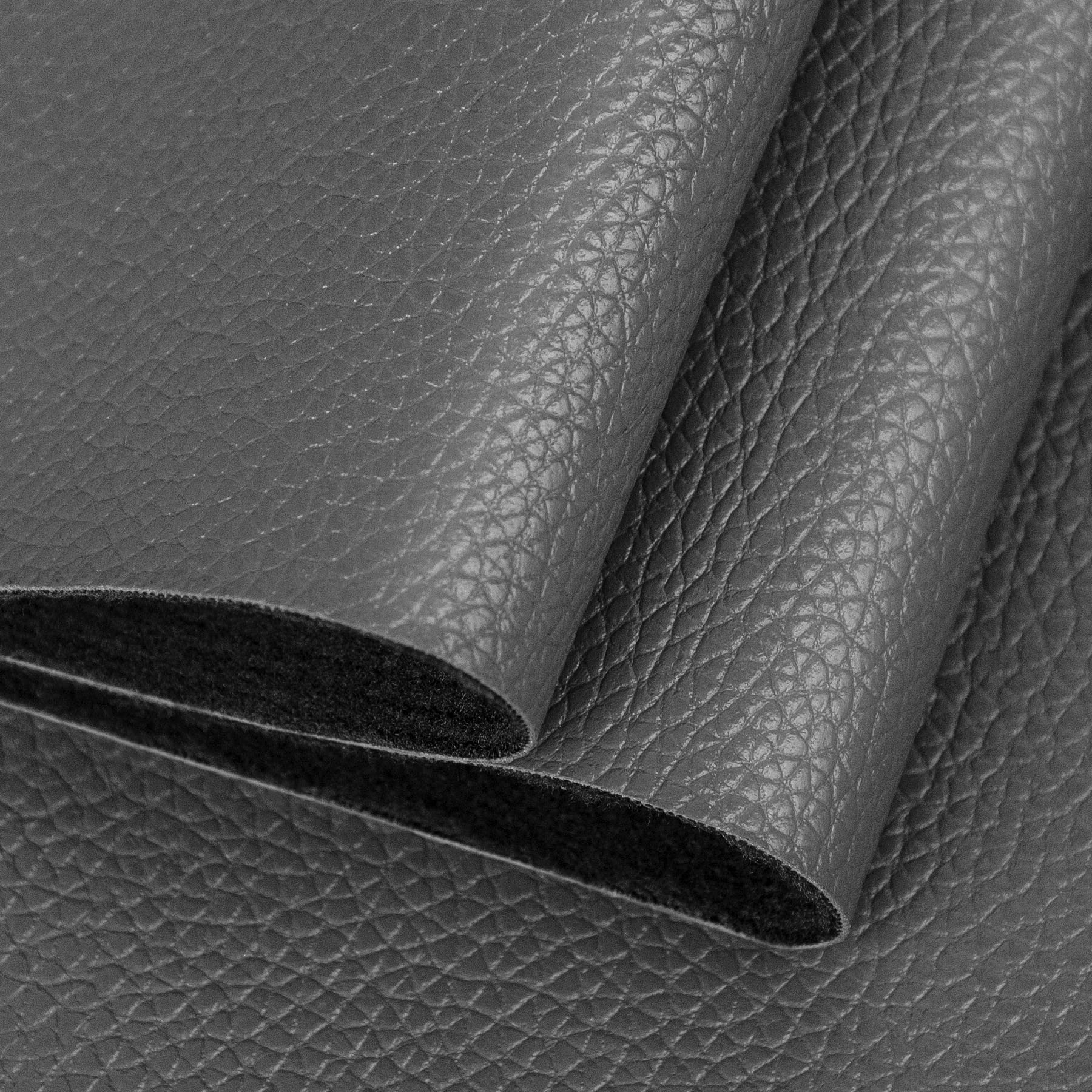
Illustrative image related to fake leather fabric
Pros and Cons:
The primary advantage of eco-leather is its appeal to environmentally conscious consumers. However, it may come at a higher price point and can vary significantly in quality based on manufacturing processes.
Impact on Application:
Eco-leather is suitable for a wide range of applications, including fashion, upholstery, and automotive interiors, particularly in markets that prioritize sustainability.
Considerations for International Buyers:
Buyers should verify certifications and standards related to sustainability, as these can vary significantly between regions. Understanding local consumer preferences for eco-friendly products can also enhance market penetration.
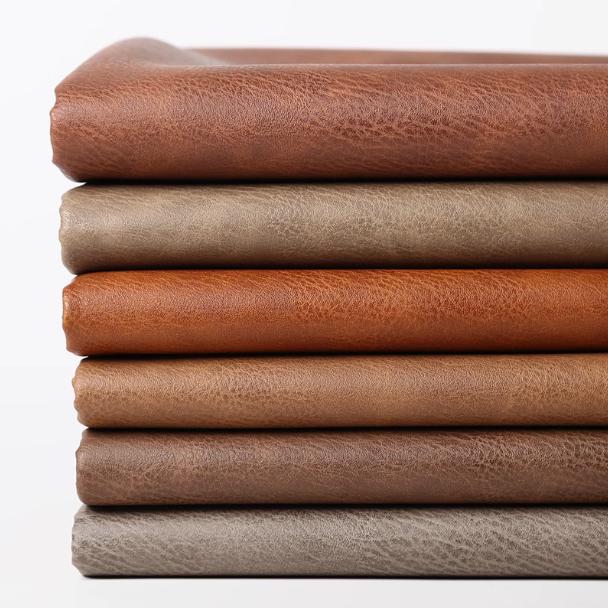
Illustrative image related to fake leather fabric
Summary Table of Material Selection for Fake Leather Fabric
| Material | Typical Use Case for fake leather fabric | Key Advantage | Key Disadvantage/Limitation | Relative Cost (Low/Med/High) |
|---|---|---|---|---|
| PU Leather | Upholstery, automotive interiors | Soft texture, affordable | Less durable than genuine leather | Low |
| PVC | Healthcare, commercial settings | High durability, low cost | Less breathable, limited flexibility | Low |
| Microfiber Leather | High-end furniture, fashion accessories | Luxurious feel, stain resistant | Higher cost | Med |
| Eco-Leather | Fashion, sustainable products | Environmentally friendly | Higher price, variable quality | High |
This guide aims to equip international B2B buyers with the necessary insights to make informed decisions when selecting fake leather fabrics, ensuring compliance with local standards and aligning with market demands.
In-depth Look: Manufacturing Processes and Quality Assurance for fake leather fabric
What Are the Key Stages in the Manufacturing Process of Fake Leather Fabric?
Manufacturing fake leather, also known as faux leather or synthetic leather, involves a series of intricate stages designed to ensure quality and functionality. The primary steps include material preparation, forming, assembly, and finishing.
How Is Material Prepared for Faux Leather Production?
The first stage in producing faux leather fabric involves sourcing raw materials, typically a combination of synthetic polymers such as polyurethane (PU) and polyvinyl chloride (PVC). The selection of high-quality substrates is crucial, as these materials will determine the final product’s durability and appearance.
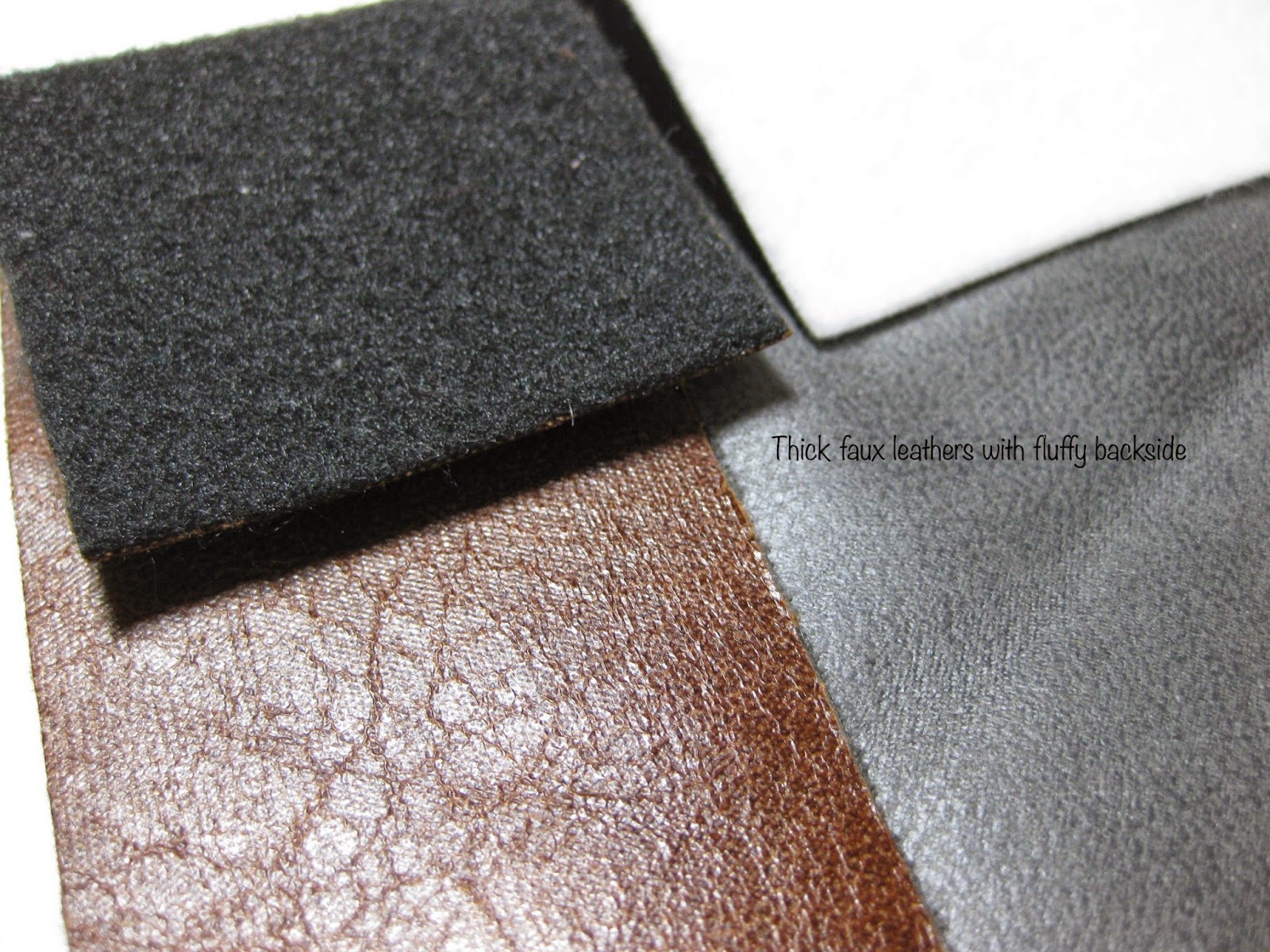
Illustrative image related to fake leather fabric
Once the materials are sourced, they undergo a thorough cleaning and treatment process to eliminate impurities. This stage may involve chemical treatments to enhance properties like flexibility, stain resistance, and durability. The prepared materials are then cut into appropriate sizes for the subsequent stages of production.
What Techniques Are Used in the Forming Process of Faux Leather?
The forming process is where the actual transformation into faux leather occurs. This stage typically involves applying a polymer coating onto a fabric backing, which may be made from cotton, polyester, or other fibers. The polymer is often mixed with additives to enhance its properties, such as UV resistance and fire retardance.
The application of the polymer is done through various techniques, including:
- Coating: A uniform layer of the polymer mixture is spread onto the fabric backing.
- Lamination: This involves bonding the polymer layer to the fabric under heat and pressure, ensuring a durable bond.
- Embossing: To achieve a leather-like texture, the coated fabric is passed through rollers with engraved patterns that create the desired grain.
This combination of techniques ensures that the faux leather not only resembles genuine leather in appearance but also in feel and durability.
How Are Fake Leather Products Assembled?
After the forming process, the faux leather material is ready for assembly. This stage involves cutting the fabric into specific shapes and sizes required for the end products, whether upholstery, automotive interiors, or fashion items.
The assembly process may vary depending on the intended use but generally includes sewing, bonding, or other methods to join pieces together. Quality stitching is crucial, as it impacts both the aesthetic and durability of the final product. Automated cutting and sewing machines are often used to enhance efficiency and consistency.

Illustrative image related to fake leather fabric
What Finishing Techniques Are Applied to Faux Leather?
Finishing is the final stage in the manufacturing process, where additional treatments are applied to enhance the faux leather’s performance characteristics. This may include:
- Coating with Protective Finishes: To improve stain resistance, waterproofing, and UV protection.
- Coloring and Dyeing: Faux leather can be dyed in a variety of colors, allowing for extensive customization.
- Surface Treatments: Additional textures or finishes can be applied to meet specific aesthetic or functional requirements.
These finishing techniques are vital for ensuring that the faux leather can withstand the demands of its intended applications while maintaining an attractive appearance.
What Quality Control Measures Are Essential for Faux Leather Fabric?
Quality assurance in faux leather manufacturing is crucial for meeting international standards and ensuring customer satisfaction. A robust QC process typically involves several checkpoints throughout the production cycle.
Which International Standards Should B2B Buyers Consider?
International standards such as ISO 9001 are critical for manufacturers aiming to ensure consistent quality management systems. For specific industries, additional certifications like CE marking (indicating compliance with European health and safety standards) or API standards for automotive applications may be required.
Understanding these standards can help B2B buyers assess the credibility and reliability of potential suppliers.
What Are the Key Quality Control Checkpoints in Faux Leather Manufacturing?
Quality control checkpoints are typically divided into three main categories:
-
Incoming Quality Control (IQC): This initial stage involves inspecting raw materials for compliance with specified quality standards. This can include visual inspections and material testing to ensure they meet the required specifications.
-
In-Process Quality Control (IPQC): During the production process, regular checks are conducted to monitor the quality of the manufacturing process. This includes evaluating the application of coatings, monitoring for defects, and ensuring that production processes comply with established standards.
-
Final Quality Control (FQC): After the manufacturing process is complete, finished products undergo rigorous testing. This may involve physical inspections, performance testing (such as abrasion and tear resistance), and compliance checks against international standards.
How Can B2B Buyers Verify Supplier Quality Control Processes?
To ensure that suppliers adhere to quality control standards, B2B buyers should consider the following approaches:
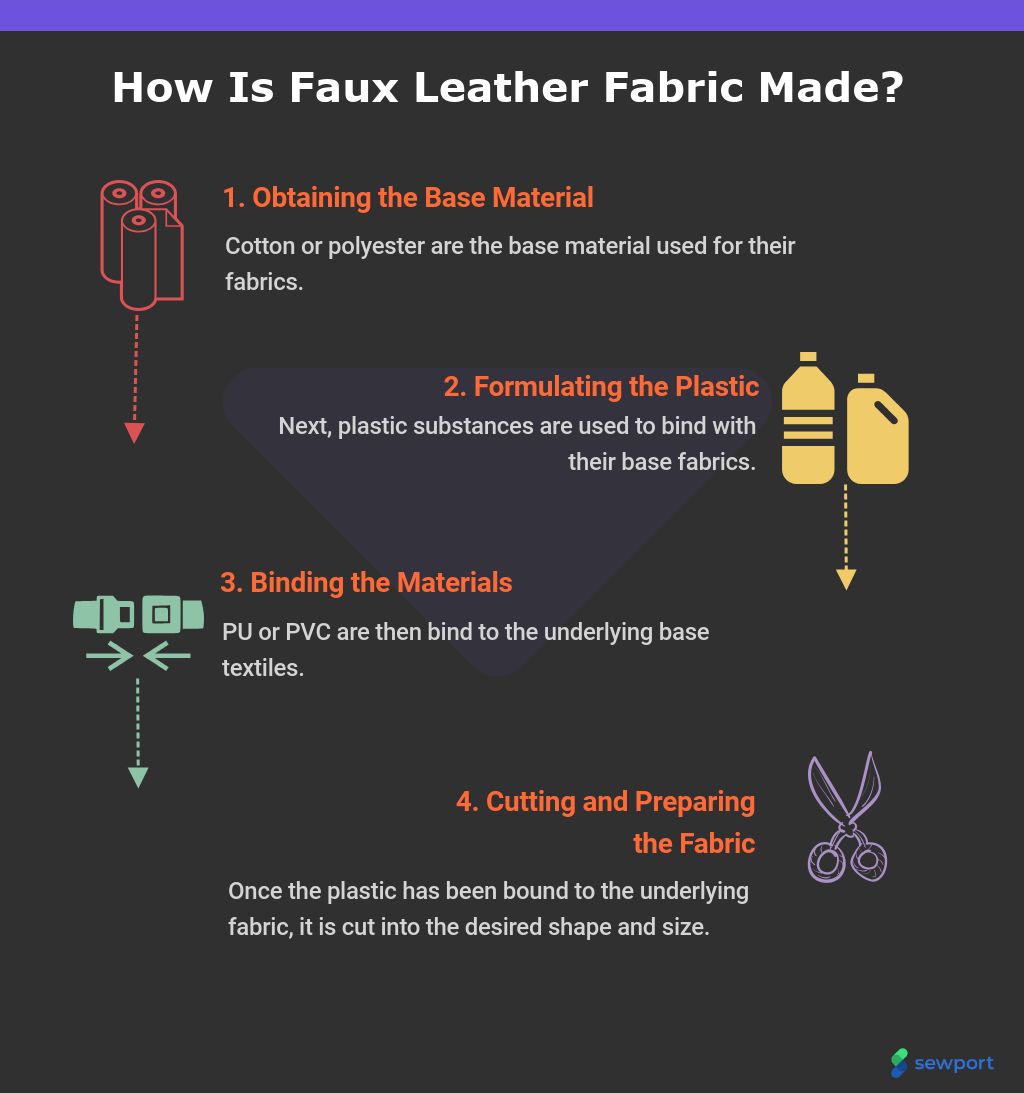
Illustrative image related to fake leather fabric
- Supplier Audits: Conducting regular audits of potential suppliers can provide insights into their QC processes and adherence to international standards.
- Requesting Quality Reports: Suppliers should be able to provide documentation demonstrating their compliance with industry standards and their internal quality assurance processes.
- Third-Party Inspections: Engaging third-party organizations to conduct independent quality inspections can offer an unbiased assessment of the supplier’s quality control measures.
What Nuances Should International B2B Buyers Be Aware Of Regarding Quality Control?
B2B buyers in regions such as Africa, South America, the Middle East, and Europe should be mindful of specific nuances in quality control practices. Different regions may have varying standards and expectations regarding material quality, environmental sustainability, and ethical sourcing.
For example, buyers in Europe may place a higher emphasis on sustainability and eco-friendly materials compared to buyers in other regions. Understanding these regional differences can help buyers make informed decisions and select suppliers that align with their values and requirements.
In summary, the manufacturing processes and quality assurance practices for faux leather fabric are intricate and vital for ensuring product reliability and customer satisfaction. By understanding these processes, B2B buyers can make more informed purchasing decisions and foster strong partnerships with suppliers.
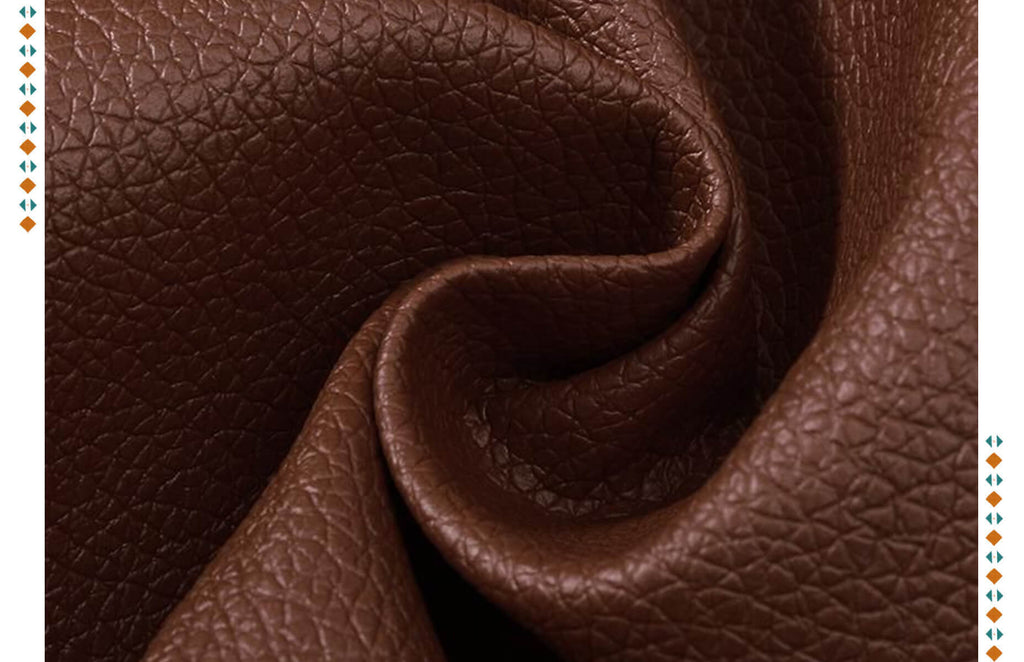
Illustrative image related to fake leather fabric
Practical Sourcing Guide: A Step-by-Step Checklist for ‘fake leather fabric’
Introduction
This guide provides a practical checklist for B2B buyers seeking to procure fake leather fabric. As demand for sustainable and cost-effective alternatives to genuine leather rises, understanding the nuances of sourcing faux leather is essential for making informed purchasing decisions. This checklist will help you navigate the complexities of the market, ensuring you find the right materials for your business needs.
Step 1: Define Your Technical Specifications
Before initiating the sourcing process, it’s vital to clearly outline your technical specifications for the fake leather fabric. Consider factors such as durability, texture, color, and intended use (e.g., upholstery, automotive, or marine applications). This step ensures that you only engage suppliers who can meet your specific requirements.
- Durability Requirements: Identify if you need commercial-grade materials or options suitable for residential use.
- Environmental Considerations: Decide if you prefer eco-friendly or sustainable options, which are increasingly important to consumers.
Step 2: Research Potential Suppliers
Conduct thorough research to identify potential suppliers of fake leather fabric. Look for suppliers with a strong reputation in the market and positive reviews from other B2B buyers.
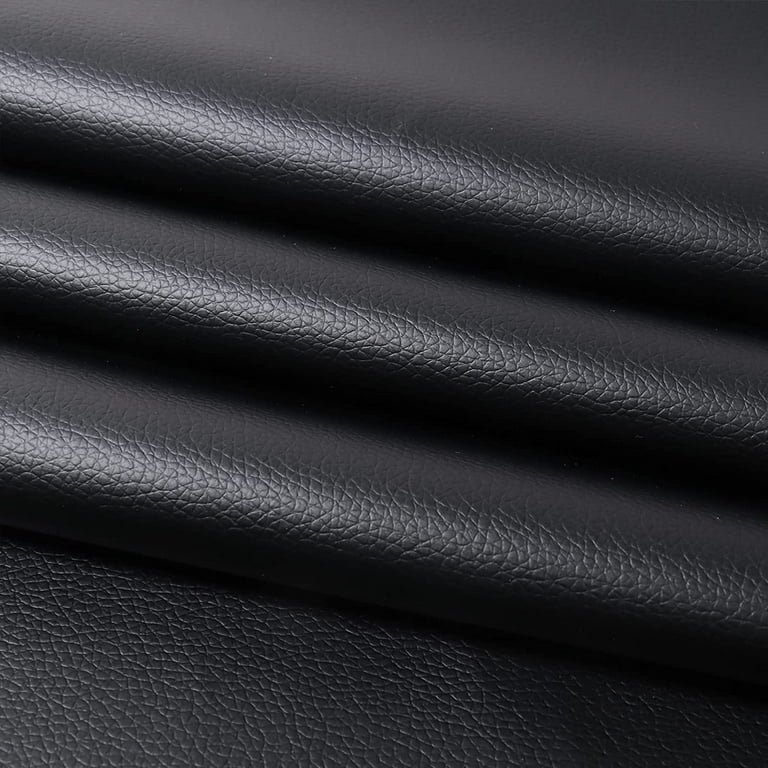
Illustrative image related to fake leather fabric
- Industry Experience: Prioritize suppliers who have a proven track record in your specific industry.
- Product Range: Ensure the supplier offers a variety of materials that match your defined specifications.
Step 3: Request Samples
Once you have identified potential suppliers, request fabric samples to evaluate the quality firsthand. This step is crucial for assessing the material’s texture, appearance, and durability.
- Quality Assessment: Examine the samples for consistency in color and finish, and check for any defects.
- Performance Testing: Consider testing samples for water resistance, stain resistance, and flexibility, particularly if the fabric will face heavy use.
Step 4: Verify Supplier Certifications
Ensure that your chosen suppliers comply with industry standards and regulations by verifying their certifications. This step protects your business from potential legal and quality issues.
- Quality Certifications: Look for certifications such as ISO 9001 or specific textile quality standards.
- Sustainability Certifications: If applicable, check for eco-friendly certifications like OEKO-TEX or GOTS for organic textiles.
Step 5: Negotiate Pricing and Terms
Engage in negotiations with your selected suppliers to secure favorable pricing and terms. This is a critical step to maximize your budget while ensuring you receive quality products.
- Volume Discounts: Inquire about bulk purchasing discounts, especially if you plan to order large quantities.
- Payment Terms: Clarify payment terms and conditions, including deposits and payment schedules, to ensure financial clarity.
Step 6: Assess Logistics and Delivery Options
Evaluate the logistics and delivery options offered by your suppliers. Efficient supply chain management is vital for timely delivery and project management.
- Shipping Options: Discuss shipping methods and associated costs, especially if you are sourcing internationally.
- Lead Times: Confirm production and delivery timelines to align with your project schedules.
Step 7: Establish a Trial Order
Before committing to a large order, consider placing a trial order. This step allows you to evaluate the supplier’s reliability and the product’s performance in a real-world scenario.
- Feedback Loop: Use this opportunity to gather feedback from your team regarding the material’s performance.
- Supplier Responsiveness: Assess how well the supplier handles order fulfillment and customer service during this initial phase.
By following this checklist, B2B buyers can confidently navigate the sourcing process for fake leather fabric, ensuring that they make informed decisions that align with their business objectives.
Comprehensive Cost and Pricing Analysis for fake leather fabric Sourcing
What Are the Key Cost Components in Sourcing Fake Leather Fabric?
When sourcing fake leather fabric, understanding the cost structure is crucial for international B2B buyers. The primary components influencing the total cost include:
-
Materials: The quality of raw materials significantly impacts pricing. Faux leather can be made from various polymers, primarily polyurethane (PU) and polyvinyl chloride (PVC). PU, known for its softness and durability, typically costs more than PVC. Buyers should consider the trade-offs between material types based on their specific applications.
-
Labor: Labor costs vary significantly by region. In countries with lower labor costs, such as those in Africa and South America, manufacturers may offer competitive pricing. However, the skill level of the labor force can affect the quality of the final product.
-
Manufacturing Overhead: This includes costs related to production facilities, utilities, and equipment maintenance. Efficient manufacturing processes can reduce overhead, allowing suppliers to offer more competitive pricing.
-
Tooling: Custom tooling for specific fabric designs or textures can add to the initial cost. Buyers should assess whether the investment in custom tooling aligns with their volume requirements and long-term needs.
-
Quality Control (QC): Implementing stringent QC measures ensures the product meets specified standards. While this may increase costs, it is essential for maintaining quality and reducing returns or complaints.
-
Logistics: Shipping costs can vary based on the distance from the supplier, chosen transport methods, and associated tariffs. Buyers should consider the Incoterms that dictate responsibility for shipping costs and risks.
-
Margin: Suppliers typically add a margin to cover their costs and generate profit. Understanding the typical margins in the industry can aid buyers in negotiating better deals.
How Do Price Influencers Affect Fake Leather Fabric Pricing?
Several factors influence the pricing of fake leather fabric, particularly for international buyers:
-
Volume/MOQ (Minimum Order Quantity): Bulk orders often lead to significant discounts. Buyers should assess their needs and negotiate accordingly to benefit from economies of scale.
-
Specifications and Customization: Custom designs or specific performance features (like stain resistance or eco-friendly materials) can drive up costs. Buyers should balance their customization needs against their budget constraints.
-
Material Quality and Certifications: Higher-quality materials or those with specific certifications (e.g., eco-friendly or fire-resistant) typically come at a premium. Buyers should evaluate whether these enhancements are necessary for their end-use applications.
-
Supplier Factors: The reputation and reliability of the supplier can impact pricing. Established suppliers may charge more but often provide better quality and service, reducing risk.
-
Incoterms: Understanding the implications of Incoterms is vital. They define the responsibilities of buyers and sellers in shipping and can affect overall pricing.
What Buyer Tips Can Enhance Cost-Efficiency in Fake Leather Fabric Sourcing?
To maximize cost-efficiency when sourcing fake leather fabric, consider the following strategies:
-
Negotiate Wisely: Engage in open discussions with suppliers about pricing and terms. Highlighting potential long-term partnerships can encourage them to offer better pricing or terms.
-
Evaluate Total Cost of Ownership (TCO): Look beyond the initial purchase price. Consider factors like durability, maintenance, and replacement costs. Investing in higher-quality materials may yield savings in the long run.
-
Understand Pricing Nuances for International Purchases: Factors such as currency fluctuations, import duties, and local market conditions can affect pricing. Buyers should stay informed about these variables to make cost-effective decisions.
-
Leverage Local Suppliers: For buyers in Africa and South America, sourcing from local suppliers can reduce logistics costs and support regional economies. This may also lead to faster turnaround times.
In conclusion, a comprehensive understanding of the cost structure, pricing influencers, and strategic purchasing tips can empower B2B buyers to make informed decisions when sourcing fake leather fabric. By focusing on these elements, businesses can optimize their sourcing strategies and achieve better financial outcomes.
Alternatives Analysis: Comparing fake leather fabric With Other Solutions
Understanding Alternatives to Fake Leather Fabric
In the quest for durable and aesthetically pleasing materials, B2B buyers often evaluate various options for upholstery and other applications. Fake leather fabric, known for its affordability and versatility, competes with a few notable alternatives. Understanding these options can help businesses make informed decisions that align with their operational needs and budget constraints.
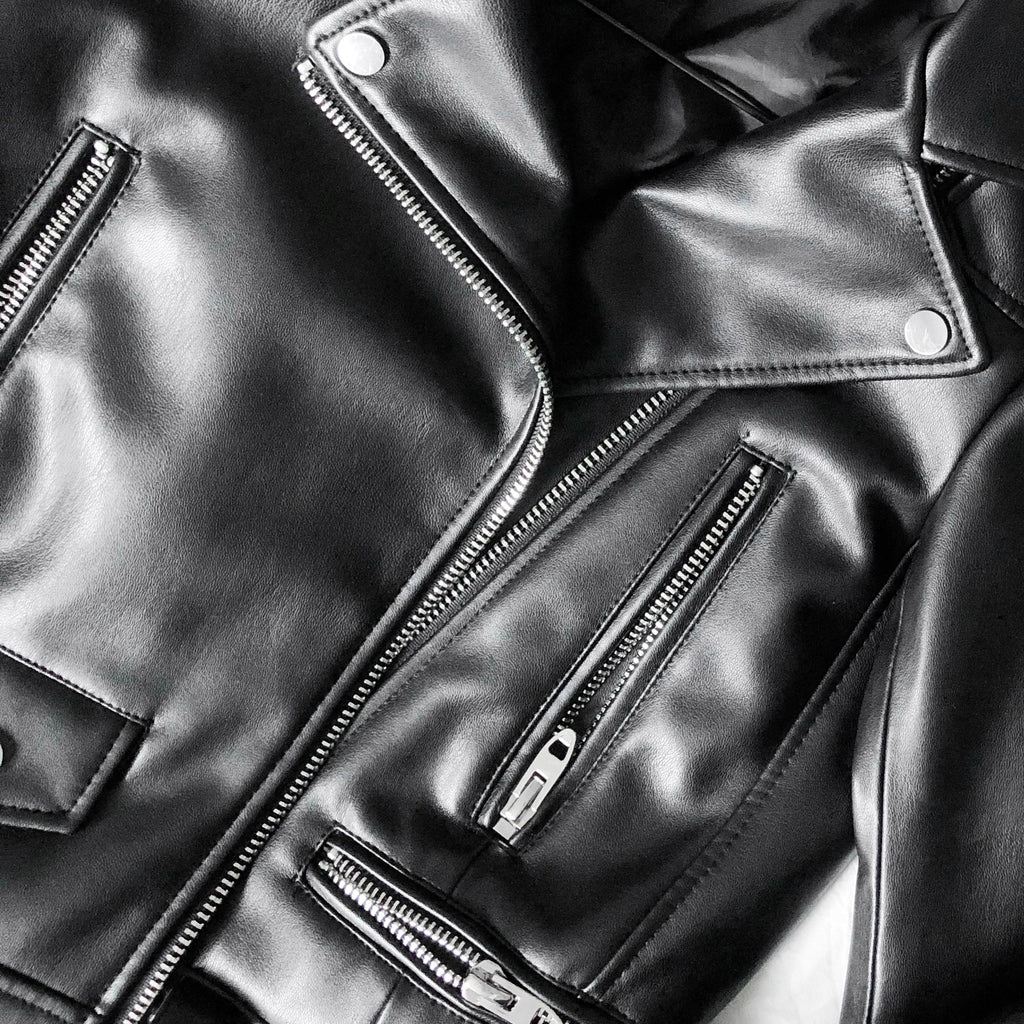
Illustrative image related to fake leather fabric
Comparison Table
| Comparison Aspect | Fake Leather Fabric | Genuine Leather | Textile Fabric |
|---|---|---|---|
| Performance | Highly durable, water and stain-resistant | Extremely durable, but sensitive to moisture | Varies widely; can be less durable |
| Cost | Up to 75% less than genuine leather | High cost due to sourcing and processing | Generally lower, but varies by type |
| Ease of Implementation | Easy to cut, sew, and apply | Requires specialized tools and skills | Simple to work with; varies by type |
| Maintenance | Easy to clean with damp cloth | Requires conditioning and careful cleaning | Generally easy but may require specific care |
| Best Use Case | Upholstery for furniture, automotive, marine | Luxury items, high-end upholstery | Casual wear, soft furnishings |
Detailed Breakdown of Alternatives
Genuine Leather
Genuine leather is renowned for its luxurious appearance and durability. It offers a unique texture and develops a patina over time, enhancing its aesthetic appeal. However, the high cost is a significant drawback, often making it impractical for mass production or budget-conscious projects. Moreover, genuine leather requires careful maintenance, including conditioning and protection from moisture, which can complicate its use in certain environments. For businesses focused on high-end products, genuine leather remains a compelling choice, but it may not suit all applications.
Textile Fabric
Textile fabrics encompass a broad range of materials, including cotton, linen, and polyester blends. These fabrics are generally more affordable and widely available, making them suitable for various applications, from casual wear to soft furnishings. However, they often lack the durability and water resistance of fake leather and genuine leather. While textile fabrics can be easy to work with, their maintenance requirements may vary significantly, impacting their long-term usability in demanding environments. Companies looking for budget-friendly options without the need for heavy-duty performance might find textile fabrics appealing.
Conclusion: Choosing the Right Solution for Your Business Needs
When evaluating the best material for your specific applications, consider factors such as cost, performance, and maintenance requirements. Fake leather fabric offers a balanced solution for those seeking affordability and durability, making it ideal for furniture and automotive uses. However, if luxury and longevity are paramount, genuine leather may justify its higher cost. For projects requiring versatility and lower initial investment, textile fabrics can provide a suitable alternative, albeit with considerations regarding durability. Ultimately, understanding the nuances of each option will empower B2B buyers to select materials that align with their operational goals and customer expectations.
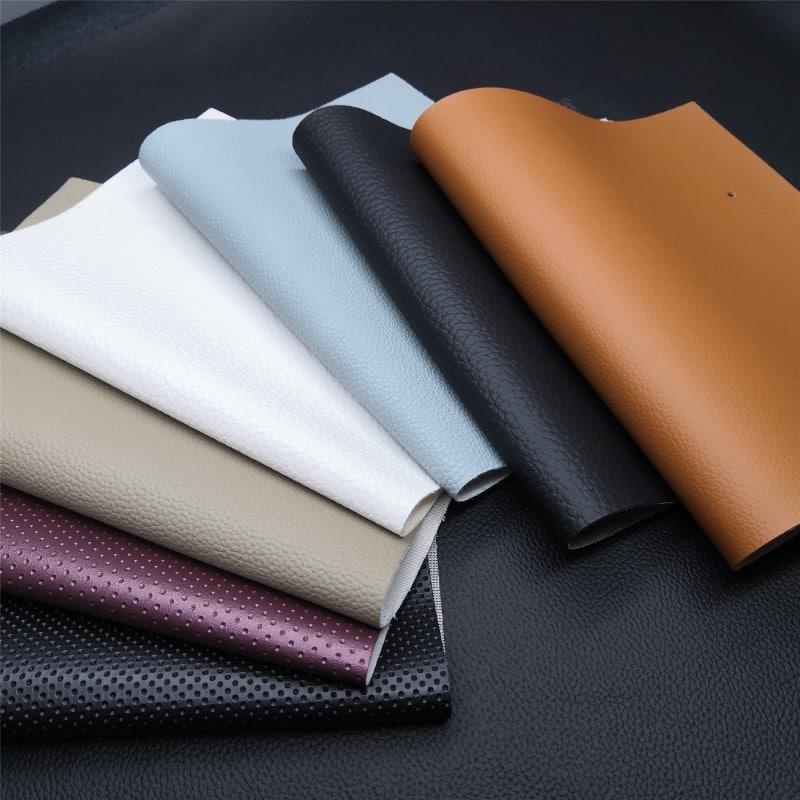
Illustrative image related to fake leather fabric
Essential Technical Properties and Trade Terminology for fake leather fabric
What Are the Key Technical Properties of Fake Leather Fabric?
When sourcing fake leather fabric for B2B applications, understanding its technical properties is crucial. Here are some essential specifications that buyers should consider:
1. Material Composition
The two primary types of fake leather are polyurethane (PU) and polyvinyl chloride (PVC). PU leather is known for its soft texture and flexibility, making it a popular choice for high-quality upholstery. PVC, on the other hand, is more rigid but offers excellent durability and water resistance. Knowing the material composition helps in selecting the right fabric for specific applications, such as automotive or marine upholstery.
2. Thickness (Gauge)
The thickness of fake leather can vary significantly, typically measured in millimeters. Thicker materials are often more durable, making them suitable for high-wear applications, while thinner materials can provide a more lightweight option for fashion products. Understanding the gauge is vital for ensuring that the fabric meets the performance requirements of the intended use.
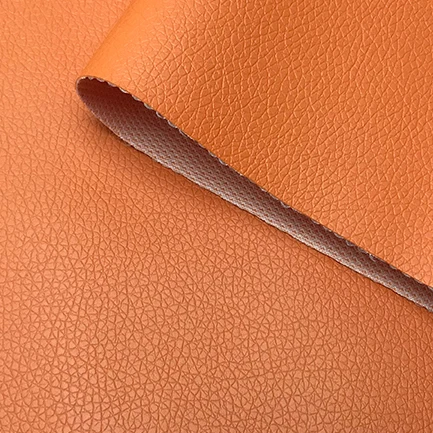
Illustrative image related to fake leather fabric
3. Abrasion Resistance
This property indicates how well the fabric can withstand wear and tear. It is typically measured using the Martindale test, where the fabric is rubbed against itself under controlled conditions. Fabrics with high abrasion resistance are essential for applications like furniture or automotive seats, where frequent contact can lead to rapid deterioration.
4. Water and Stain Resistance
Many fake leather fabrics come with treatments that enhance their resistance to water and stains. This property is especially important in sectors like hospitality and automotive, where spills and moisture exposure are common. Fabrics that are easy to clean and maintain can significantly reduce long-term costs for businesses.
5. Fire Retardancy
In some applications, particularly in commercial settings, fire retardancy is a critical property. Fake leather can be treated to meet specific fire safety standards, making it suitable for use in public spaces like theaters or transportation. Understanding the fire rating of the fabric can help ensure compliance with local regulations.
6. UV Resistance
For outdoor applications, UV resistance is essential to prevent fading and degradation from sun exposure. Fabrics designed for outdoor use often incorporate UV inhibitors, extending their lifespan and maintaining aesthetic appeal. This property is crucial for buyers in regions with high sun exposure.

Illustrative image related to fake leather fabric
What Are the Common Trade Terms Related to Fake Leather Fabric?
Navigating the trade environment involves understanding specific jargon. Here are some essential terms relevant to fake leather fabric procurement:
1. OEM (Original Equipment Manufacturer)
OEM refers to a company that produces parts or equipment that may be marketed by another manufacturer. In the context of fake leather, an OEM might create custom upholstery solutions for furniture manufacturers. Understanding OEM relationships can help buyers negotiate better pricing and terms.
2. MOQ (Minimum Order Quantity)
MOQ is the minimum quantity of units that a supplier is willing to sell. This term is critical for B2B buyers as it affects inventory levels and cash flow. Knowing the MOQ helps businesses plan their orders effectively and avoid overstock or stockouts.
3. RFQ (Request for Quotation)
An RFQ is a document sent to suppliers requesting pricing and terms for specific products. This process is vital for comparing options and ensuring competitive pricing on fake leather fabrics. A well-prepared RFQ can streamline procurement and enhance decision-making.
4. Incoterms
Incoterms (International Commercial Terms) define the responsibilities of buyers and sellers in international trade. They cover aspects such as shipping, insurance, and tariffs. Familiarity with Incoterms helps buyers understand their obligations and risks in the procurement process.
5. Lead Time
Lead time refers to the duration from placing an order to receiving the goods. Understanding lead times is essential for inventory management and production planning, especially in industries where timing is critical.
6. Certification Standards
These standards indicate that the fake leather fabric meets specific quality or safety benchmarks, such as ISO certifications or environmental compliance. Buyers should prioritize suppliers with recognized certifications to ensure product quality and sustainability.
By grasping these technical properties and trade terms, B2B buyers can make informed decisions when sourcing fake leather fabric, ultimately enhancing their product offerings and operational efficiency.
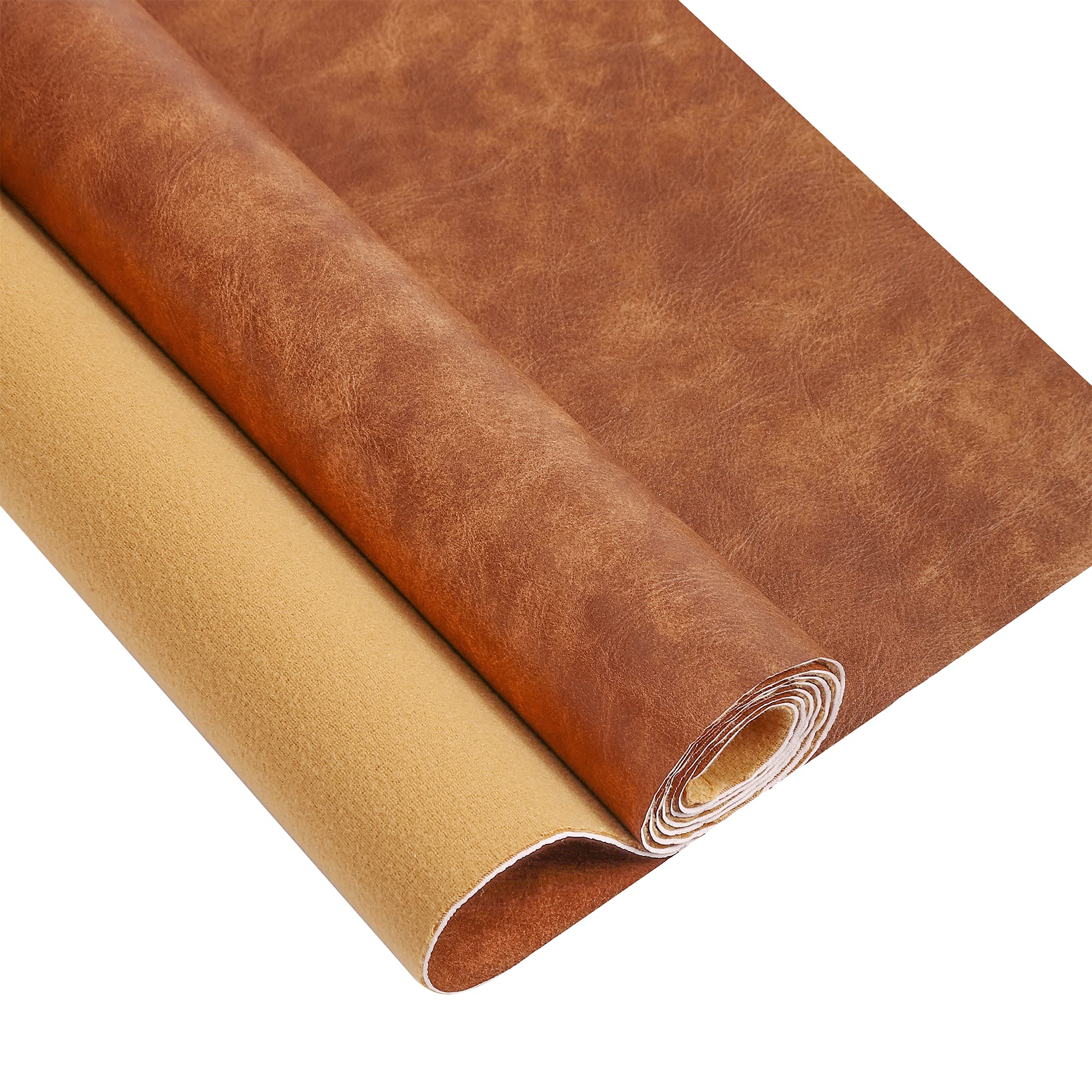
Illustrative image related to fake leather fabric
Navigating Market Dynamics and Sourcing Trends in the fake leather fabric Sector
What Are the Current Market Dynamics and Key Trends in the Fake Leather Fabric Sector?
The global market for fake leather fabric is experiencing significant growth, driven by increasing consumer preference for sustainable and affordable alternatives to genuine leather. The rise in environmental awareness and ethical considerations among consumers has accelerated the demand for faux leather, particularly in regions like Africa, South America, the Middle East, and Europe. For B2B buyers, understanding these dynamics is crucial for sourcing decisions.
Key trends shaping the market include the integration of advanced technology in production processes, leading to improved durability and aesthetic appeal of faux leather products. Innovations such as 3D printing and digital printing are enabling manufacturers to create custom designs and textures, appealing to a broader range of industries from automotive to fashion. Additionally, the emergence of high-performance faux leather options that offer water resistance, stain resistance, and UV protection is gaining traction, particularly in commercial applications.
B2B buyers are increasingly focusing on suppliers who offer flexible ordering options, such as purchasing by the yard, which caters to diverse project needs. Moreover, the competitive pricing of faux leather—up to 75% less than genuine leather—provides an attractive proposition for businesses looking to optimize costs without compromising on quality. As the market continues to evolve, staying informed about these trends will empower international buyers to make strategic sourcing decisions that align with their business objectives.
How Does Sustainability and Ethical Sourcing Impact the Fake Leather Fabric Industry?
The importance of sustainability in the fake leather fabric sector cannot be overstated. As global consumers and businesses become more environmentally conscious, the demand for eco-friendly materials is reshaping sourcing strategies. Faux leather, primarily composed of synthetic materials, presents a more sustainable alternative to traditional leather, which often involves resource-intensive animal husbandry and processing.
B2B buyers are increasingly prioritizing suppliers who emphasize ethical supply chains and sustainability certifications. Materials that are labeled as “green” or come from recycled sources are gaining popularity, as they align with the growing trend toward responsible sourcing. Certifications such as Global Recycled Standard (GRS) and OEKO-TEX® Standard 100 provide assurance to buyers regarding the environmental impact of the materials they purchase.
Moreover, faux leather’s inherent properties, such as being water-resistant and easy to maintain, contribute to its longevity and reduced environmental footprint. This, combined with its versatility across applications—from furniture upholstery to automotive interiors—positions it as a favorable choice for businesses committed to sustainable practices. By focusing on ethical sourcing, B2B buyers can not only enhance their brand reputation but also meet the increasing demand for sustainable products in the marketplace.
What Is the Historical Context of Fake Leather Fabric Development?
The evolution of fake leather fabric dates back to the early 20th century, with the introduction of synthetic materials designed to mimic genuine leather. Initially, these materials were rudimentary and lacked the durability and aesthetic appeal of natural leather. However, significant advancements in technology and materials science have led to the development of high-quality faux leather options, such as polyurethane (PU) and polyvinyl chloride (PVC).
The 1920s marked a pivotal point with the invention of Naugahyde, a brand that popularized synthetic leather for upholstery. Over the decades, the industry has transformed, with innovations enabling the production of faux leather that is nearly indistinguishable from genuine leather in texture and appearance. This evolution has not only expanded the applications of faux leather but has also made it a staple in various sectors, including fashion, automotive, and interior design.
As B2B buyers consider sourcing options, understanding the historical context of fake leather fabric can provide insights into the quality and performance expectations of modern materials. Recognizing the journey from early synthetic materials to today’s advanced offerings highlights the ongoing potential for faux leather in meeting diverse market demands.
Frequently Asked Questions (FAQs) for B2B Buyers of fake leather fabric
-
How do I choose the right fake leather fabric for my project?
Selecting the ideal fake leather fabric depends on various factors including the intended use, required durability, and aesthetic preferences. For upholstery, opt for PU leather for its soft feel and flexibility, while PVC may be suitable for more rugged applications. Consider performance features like stain resistance and water repellency, especially for outdoor or commercial uses. Sample swatches can help assess texture and color before making bulk purchases. Collaborate with suppliers to understand the specific properties of each fabric type. -
What are the advantages of sourcing faux leather over genuine leather?
Faux leather offers numerous advantages, making it a preferred choice for many businesses. It is significantly more cost-effective, often costing up to 75% less than genuine leather. Additionally, faux leather is easier to maintain, resistant to stains and moisture, and available in a wider variety of colors and textures. It is also a more sustainable option, as it is made from synthetic materials rather than animal hides, appealing to eco-conscious consumers. -
What is the typical minimum order quantity (MOQ) for fake leather fabric?
Minimum order quantities can vary widely based on the supplier and the specific type of faux leather. Generally, MOQs range from 50 to 500 yards, depending on the fabric and customization options. It is advisable to discuss your project requirements with potential suppliers to negotiate suitable MOQs that align with your business needs. Some suppliers may offer lower MOQs for certain designs or during promotional periods. -
What payment terms should I expect when sourcing fake leather fabric internationally?
Payment terms for international transactions can vary by supplier but commonly include options such as advance payment, letters of credit, or partial payments upon order confirmation. Ensure you clarify the terms before finalizing any agreements. For larger orders, negotiating favorable payment terms can help manage cash flow effectively. Be cautious of suppliers requiring full upfront payment, as this can increase risk; consider using escrow services for added security. -
How can I ensure the quality of faux leather fabric before purchasing?
To guarantee the quality of faux leather, request samples from suppliers to evaluate texture, durability, and color accuracy. Ask for certifications or test reports that demonstrate compliance with relevant industry standards. Additionally, consider conducting a quality assurance (QA) inspection once the bulk order is ready to ensure that the fabric meets your specified requirements. Engaging a third-party inspection service can provide further assurance, especially for large international shipments. -
What should I know about shipping logistics for faux leather fabric?
When sourcing faux leather fabric internationally, understanding shipping logistics is crucial. Factors such as shipping methods (air vs. sea), lead times, and customs regulations can significantly impact delivery schedules. Work with suppliers who have experience in international shipping to navigate these complexities. Additionally, consider incoterms (International Commercial Terms) that define the responsibilities of buyers and sellers in shipping to avoid any misunderstandings. -
Are customization options available for fake leather fabric?
Yes, many suppliers offer customization options for faux leather, including color matching, embossing patterns, and specific widths or thicknesses. Custom orders may require higher MOQs and longer lead times, so it’s advisable to communicate your needs early in the sourcing process. Discussing your project requirements with suppliers will help them understand how best to accommodate your requests, ensuring the final product aligns with your brand vision. -
How do I vet potential suppliers of faux leather fabric?
Vetting suppliers is essential to ensure reliability and quality. Start by checking their company history, customer reviews, and certifications. Request references from other B2B clients and assess their communication responsiveness. Additionally, evaluate their production capabilities and quality assurance practices. If possible, visit their facilities or attend trade shows to establish personal connections and gain insights into their operations.
Top 6 Fake Leather Fabric Manufacturers & Suppliers List
1. Decorative Fabrics Direct – PU Leather & Faux Leather
Domain: decorativefabricsdirect.com
Registered: 2004 (21 years)
Introduction: PU Leather & Faux Leather | Vinyl Upholstery Fabric
– Terms: Free Shipping Coupon Code: SHIPFREE for most $199 orders
– Company: Decorative Fabrics Direct, a division of Peachtree Fabrics, Inc.
– Fabric Types: Faux leather, vinyl upholstery fabric, artificial leather, synthetic leather, PU leather, fake leather, imitation leather
– Features: Durable, similar texture to leather, available in rich c…
2. Folio Fabrics – Vinyl & Faux Leather Upholstery
Domain: foliofabrics.com
Registered: 2013 (12 years)
Introduction: Shop Vinyl & Faux Leather For Upholstery By The Yard – Folio Fabrics. Key features include: 4-Way Stretch, Ink Resistant, Bacteria & Mildew Resistant, Performance, Breathable, Pet Friendly, Eco-Friendly, Stain Resistant, Fade Resistant, Weather Resistant. Applications include Upholstery, Home Contract, Outdoor, Marine, Auto, and Healthcare. Patterns available: Exotics, Distressed, Pebbled, Metalli…
3. Fashion Fabric LA – Faux Leather Vinyl Fabrics
Domain: fashionfabricla.com
Registered: 2014 (11 years)
Introduction: Faux Leather Vinyl Fabrics By The Yard – Wholesale & Retail
4. Fabric Wholesale Direct – Faux Leather Fabric
Domain: fabricwholesaledirect.com
Registered: 2014 (11 years)
Introduction: This company, Fabric Wholesale Direct – Faux Leather Fabric, is a notable entity in the market. For specific product details, it is recommended to visit their website directly.
5. Sewport – Faux Leather Solutions
Domain: sewport.com
Registered: 2015 (10 years)
Introduction: Faux leather, also known as Pleather, vegan leather, Naugahyde, synthetic leather, artificial leather, fake leather, ersatz leather. Fabric composition: PVC or vegetable oils. Fabric breathability: Low. Moisture-wicking abilities: Low. Heat retention abilities: High. Stretchability: Low. Prone to pilling/bubbling: Low. Country where fabric was first produced: United States. Biggest exporting/produ…
6. Sailrite – Quality Faux Leather
Domain: sailrite.com
Registered: 1996 (29 years)
Introduction: Faux Leather, Vinyl Leather; Quality faux leather available in a variety of natural and bright colors; Suitable for upholstery applications like couches; Durability is paramount; All faux leather is in stock and ready to ship; Fabric samples available.
Strategic Sourcing Conclusion and Outlook for fake leather fabric
What Are the Key Insights for B2B Buyers in Fake Leather Fabric?
In today’s competitive market, strategic sourcing of fake leather fabric presents a unique opportunity for B2B buyers across diverse regions, including Africa, South America, the Middle East, and Europe. The affordability and versatility of faux leather alternatives, such as PU leather, make it a compelling choice for various applications—from furniture upholstery to automotive interiors. By leveraging the lower costs—up to 75% less than genuine leather—companies can enhance their product offerings while maintaining quality and durability.
Moreover, the ability to source faux leather in a myriad of colors and styles allows businesses to cater to evolving consumer preferences and trends. This adaptability is crucial in sectors like hospitality and automotive, where aesthetics and functionality must align.
As the demand for sustainable and animal-friendly materials continues to rise, incorporating faux leather into your supply chain not only meets market expectations but also positions your brand as a responsible choice.
Looking ahead, B2B buyers are encouraged to explore partnerships with reputable suppliers to ensure access to high-quality faux leather fabrics. Embrace this opportunity to innovate and lead in your market—your customers are waiting for solutions that combine style, performance, and sustainability.
Important Disclaimer & Terms of Use
⚠️ Important Disclaimer
The information provided in this guide, including content regarding manufacturers, technical specifications, and market analysis, is for informational and educational purposes only. It does not constitute professional procurement advice, financial advice, or legal advice.
While we have made every effort to ensure the accuracy and timeliness of the information, we are not responsible for any errors, omissions, or outdated information. Market conditions, company details, and technical standards are subject to change.
B2B buyers must conduct their own independent and thorough due diligence before making any purchasing decisions. This includes contacting suppliers directly, verifying certifications, requesting samples, and seeking professional consultation. The risk of relying on any information in this guide is borne solely by the reader.




